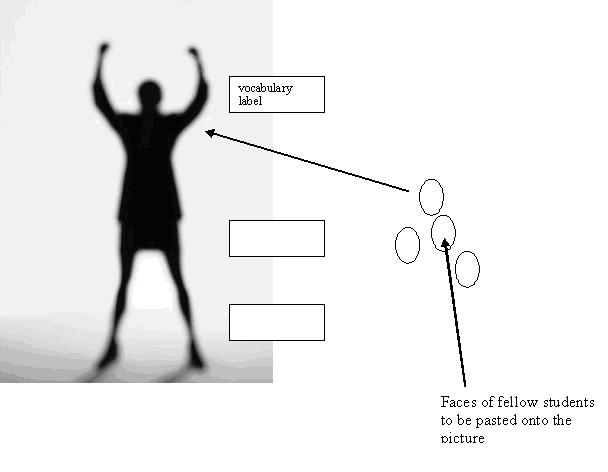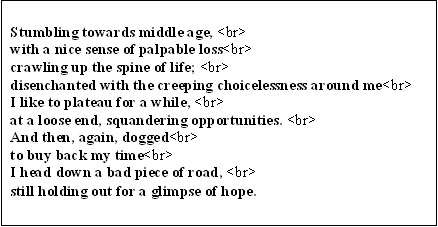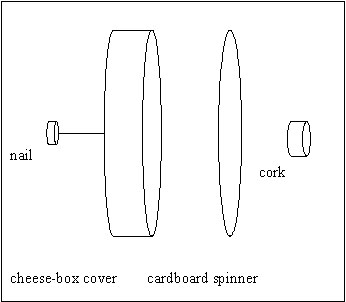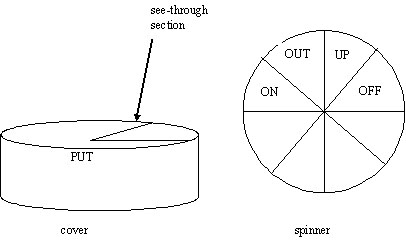
Let's Talk Rubbish
Anna Turula and Bozena Pawlowska
Bozena Pawlowska, MA. Teacher of English with UCET ( Universtity Centres for English Teaching), Katowice. Teacher trainer. For over 15 years now owns and teaches a private school in Sosnowiec, Poland.
Anna Turula, PhD. Teacher trainer with the English Department, University of Bielsko-Biala, Poland.
Menu
Background
Newspapers
Supermaarket brochures
Instruction sheets
'Kinder surprise'
Bags
Parting word
Background
Your drawers burst open spilling everything from newspaper clippings to chocolate wrappers. You are starting to seriously consider joining CCA (Compulsory Collectors Anonymous). Don't worry. This article is the only therapy you need. Read on to see where this little addiction of yours can take you.
Garbage can be very inspiring. Don't be surprised. We - the authors - could be the chairperson and the vice-chairperson of CCA if it really existed. We put things by, all kinds of them. It's so heartbreaking to part with all the stuff. It really is. But if you are still reading, it means that you empathise. So, garbage can be very inspiring; especially other people's garbage. One of our favourite activities is looking through celebrity waste - we prepare bagfuls of all kind of items and ask our students to look at a given star (Robbie Williams, Joan Rowling,etc.) through their dustbins. Of course they are not real contents of real dustbins. It is one of the "let's pretent" activities; an excellent warmer - yes, but also a good idea for the description of people and things, negotiation, speculation or practising grammar. Most importantly, though, it prepares our students for what we are really up to - regaling them with our own garbage - all the things other people don't even consider keeping like old newspapers, supermarket brochures, wrappers, paper bags, shoe boxes, buttons, keys, etc. We could probably make the list much, much longer if we weren't limited by the length of a standard article.
Yet, it is not only talking rubbish. The issues that lie behind are of much more serious nature. What we are really talking about are: learner autonomy, because, as you will see later in the article, the garbage-based activities are open-ended and thus leave all the initiative in the hands on the learners - the role of the teacher is limited to unloading the stuff on the class; multiple intelligences, as our garbage comes in plenty and variety and thus appeals to different learning styles and modalities; teaching mixed ability classes, because the diversity and student freedom make it possible for the weaker students to shine at least from time to time in areas of their expertise. It also enables them to learn form the good students because our garbage-based activities offer ample opportunities for peer tutoring; personalization, for, as you will see, most of the tasks we propose require frequent self-reference; exam practice because - it also is there to be found out - exam-type instructions of 'compare and contrast', 'talk to your partner and choose/discuss/compromise', 'instruct your partner to…' are very frequent.
In this way our little addiction gets the additional dimension of an excellent pedagogical rationale.
First things first, though.
Newspapers
English newspapers are an excellent source of headlines, which, in turn, are an excellent source of all kinds of activities like "What's the meaning of the headline?" or "Look at the headline and write the article" or "Read the headline (and the 1st para.) and tell your partner if you would read on" (thank you, Blazej Aksamitek). However, English newspapers are not what comes in plenty in a Polish dustbin, even if the person behind it is a teacher of English. People in Poland buy, read and , God forbid, throw away, Polish newspapers. And some of them have excellent photographs. Some are ideal for exam-like activities (contrast and compare; talk to your partner and choose three best ….), some are just for warm-ups and cool-downs. We collect these photographs. Yet, it's not that we have an activity in mind and look for suitable clippings. We cut out everything and collect the stuff over some time. It's then that some ideas start to come to us. We'd like to share a few with you.
1. Thematic sets.
The first idea is thematic sets of pictures for pairwork/groupwork with questions suitable for various levels. For example, a FOOD set (a collection of 6-8 worksheets, each presenting 10-12 dishes) may contain questions like:
What are the colours/shapes/foods in the pictures? - for beginners;
Look for countables/uncountables in the pictures - for pre-intermediate sts;
Choose one dish and guess how it is made - for intermediate sts;
Who would you eat each of the dishes with and why? - for higher levels
We also put the sets up on a special idea-exchange board in our teachers' room for other people to use them and, more importantly, add their questions.
There are other thematic sets as well. Up till know our collection includes: FOOD, HOLIDAYS, FACES, GESTURES, HOMES, FASHION, SHOCKING/SHOCKED, and it's growing.
2. Fashion paste-on kit

Our fashion paste-on kit is a pack of around 50 cards, each of which presents a model on the catwalk. Her/his outfit is carefully labeled by our native speaker (thank you, Michele Simmons) so the cards have the look - and the advantages - of a picture dictionary. Thus they may be used as such but we prefer to utilize them as a classroom-dynamics booster. That is why, the pack needs photocopied faces of our students plus a ball of bluetack. We divide our students into groups, give each group a number of fashion cards, some bluetack and faces (not their own, of course) and ask them to experiment, pasting on their peers' faces onto the models' faces. In a whole class feedback that follows we tell them to give fashion advice to other students. "Jacek looks gorgeous in a fur coat and stilettos" is only one of the possible suggestions. Because of its quite sophisticated vocabulary, our fashion kit is OK for levels FCE+ (Cambridge First Certificate)
3. Grammar pictures
Every thematic set contains some grammar activities but we also have special grammar sets designed for practising particular structures. The one we're particularly proud of is our modal pics - objects and faces whose most recognisable part is folded backwards. What can be seen is a tiny part of the picture, on the basis of which our students speculate (It may be…, it must be …, it can't be…) and, finally, turn the card over to see if their guesses have been right. Another example is a set of famous people with their offspring (a celebrity on one side of the card, the child - on the reverse) for practising Saxon Genitive (,i>I think this is Madonna's daughter).
Supermarket brochures
Supermarket brochures are as numerous as newspapers. The photographs in them are not so inspiring as those from magazines but they have their moments of beauty as well. First of all, every brochure has pictures of several similar items on sale. Such pictures (two slippers - one brown with a bow, one beige with a buckle; two curling brushes, one white with grey bristle and a blue switch, the other with white bristle and a pink switch) are very good for all the Find the difference pairwork activities.
Secondly, the brochures are very orderly and the items they advertise are each in the same-size box - they are begging to be cut out and turned into a boardgame. With food, clothes, domestic appliances and stationery as their main sales, supermarket brochures can be turned into at least 4 thematic boardgames. The task for every square the counter (you also need dice and counters, that's obvious, we guess) may be very easy for beginners - Name the item you see in the square you stopped on; Ask the shop assistant for the item you see in the pic.; Use a comparative/superlative form of adjective to compare the item on your square and the item(s) in neighbouring squares); more challenging tasks for higher levels may include - Instruct your partner how to operate it (appliance); Tell your partner what kind of people wear the item in the pic. (clothes); What smell/touch/falling sound do you associate with the item in the pic? (stationery).
Finally, supermarket brochures may be used as they are, without any modification, for pair/group exam-like activities including negotiating, discussing, looking for mutually satisfactory buys, compromising. That is why brochures are good for activities like: You have L100. Go shopping with your partner and spend it. Or Choose a cliché present for each of your friends and tell your partner about it. Or Choose three items you both consider an excellent present for your teacher (ha, ha).
Instruction sheets
The third paper rubbish that you, the eco-conscious teacher may want to utilize are instruction sheets. They may be used in a number of ways.
1. Instruction sheets used as instructions. Giving instructions is an exam skill. That is why it is not unwise to start with looking at them as stylistic models. The most "pedagogically awful" thing we do is give each student one instruction sheet, ask them to memorise the contents and give the instructions to the group during the following lesson. To make it a worthwhile listening exercise for the group, we instruct the student to lie three times and the group to pick out the false info.
2. Instruction sheets used as reading comprehension material. There are a number of activities as there are a number of things you may do to a piece of paper with some instructions. You may cut it up and give it jumbled to the students with a kind request to order it. You may blank-out the name of the product and ask the students what the instruction is for. You may … Well, you may do anything.
3. Instruction sheets used as the register clause writing activity. The register clause is a CAE Paper 3 nightmare. Yet the more you do in this area the less you fear the exam question. Our idea for the instruction sheets is to ask each student/pair/group (it all depends on the number of students, the number of instructions we have and the weather - low pressure is an important factor) one sheet and ask them to rewrite it in simple words so that even a man - without the patient assistance of a loving female - would be able to understand it.
4. Instruction sheets used as classroom-dynamics booster. We are very keen on our students changing partners quite often so we divide the instruction into two parts, ask the group to mingle and look for "the other half". Once the two parts of the instruction are together we ask the two students to proceed with one of the activities above (1-3)
Finally, giving instructions in itself may be an interesting pretext to let all (meaning even the weak) students show something to the group. Assuming that everybody is good at something, we ask our students to instruct their peers how they do what they excel in (playing the guitar, operating a camcorder, etc.)
Going back to our garbage addiction, we are not limited to paper waste. There are other things, you know. For example, if you have children, you must have a number of Kinder Surprise egg-shaped plastic containers; if you are a cheese lover, the cute round cardboard containers surely come in plenty.
'Kinder surprise'
What's nice about the little egg-shaped KS container is that it is a nice container. That's why all the activities presented here are likely to ring a bell. What Kinder Surprise is here for is the surprise - you don't know what is inside until you open it.
What can be found in the tiny plastic shell then?
1. One-minute speech topics. We ask a chosen student to pick one egg, open it, check the topic, think for one minute and deliver a one-minute speech on topic. Nothing new under the sun. But the container!
2. Mind-map topics - we divide students into groups of 3-4, ask each group to draw an egg with a topic and produce a mind-map of related vocabulary. Such mind-maps are excellent first-aid kits for the FCE+ but might be worth trying below the exam levels.
3. Egg poetry - the idea comes from Magnetic Poetry, a thematic kit with little magnetic pieces. Distributed at random, they must be arranged into a poem on a special magnetic board. Our egg poetry is a vocab-revision exercise. Words from, let's say, 3 last units/modules of the coursebook are written on little slips of paper and then, at random, deposited in the little egg shells. Each student/pair/group (it all depends on the number of students, the number of egg shells we have and the weather - low pressure is an important factor) gets one egg kit stuffed with lexis, opens it and has to write something using as many of the words and phrases as possible. As an example we'd like to quote a poem written by one of our best CAE students (how could we, teachers, show off if it weren't for our best students?). She got an egg shell with some lexis we compiled over time from newspaper articles we read and videos we watched. Her kit contained:

And that's what she wrote:

Speaking of fancy containers, the Kinder Surprise egg shells are not the only option. That's why our magnificent collection includes cheese boxes as well (in Poland some cheeses are packed in round cardboard containers), or, to be precise, cheese box covers. They need some grooming before they can be used (great aesthetes we both are) but, fortunately, Bozena has an artistically talented daughter who is more than willing to help. It's a different story we won't pursue as utilising own kids is not the topic of this article. If you are on the practical (childless) side yourself, all you need is a cheese box cover, a cardboard spinner to be attached to it as well as a cork and a nail (both used to attach the spinner to the cover to produce a …

Phrasal verb activator
We use the complicated gadget for phrasal vcrbs revision. It means that the cover has one verb written on it (e.g. PUT) and the cardboard spinner contains the most popular particles (OUT, UP, OFF, ON, etc.).

p>When you spin the spinner inside the cover, one particle always looks out the see-through section giving the whole phrasal verb. Our idea is to divide our class into groups of three and giving each group 2 phrasal verb activators. Two people spin their spinners and the two phrasals they come up with have to be used in a sentence produced by the third person. The same device (cheese-box cover+spinner) may be used for collocations (one word on the box, several collocating words on the spinner), idioms (same story), …. Well, whatever you can think of.
Finally, if we are talking rubbish, the bag seems a vital requisite. The other day we saw an excellent conference workshop (thank you, Grazyna Duda from Gliwice et al.) during which several objects were put into a bag. The students were divided into pairs each of which got a bagful of stuff and were asked to say what happened during their holiday abroad. We do have a set of holiday bags but, as the idea is not originally ours, we aren't going to present it. However, our friends' presentation showed us that bags as such are very inspiring. That is why we use them very often.
Bags
We divide our students into small groups and give each team a bagful of objects with some related questions and ask them to talk. Our bag repertoire includes:
1. A bagful of keys. Possible questions: What door does each key open? Imagine it is a fairytale key. What would it open? Imagine it's a key to one of your organs. Which one? …
2. A bagful of buttons. Possible questions: What outfit did the button fell off from? Imagine each button is a mysterious button - you press it and…?
3. A bagful of receipts. Possible questions: Who did the shopping? What was the purpose of the shopping? What was the main purchase?
4. A bagful of patches. Possible questions: What clothes was the material used for? Would you wear it? Would you like to see you boyfriend/girlfriend in this colour/ pattern? …
5. A bagful of gift bags. Possible questions: What was inside? Who bought it? Who for?
6. A bagful of chocolate wrappers. Possible questions: Who likes this bar? Who bought it and when (before/after what event)? …
7. A bagful of menus. Who dined here? Who with? What was the big occasion? Which one would you choose?
Parting word
As it was said at the beginning of the article, there is pedagogy lurking behind all the pleasant activities.
The first important issue is learner autonomy. As it has already been mentioned, the activities themselves allow for a considerable learner freedom and limit the role of the teacher to that of a benevolent provider of waste. There is more to that though. First, learner autonomy, among other things, is about going out - out of the coursebook to start with. All garbage-based activities take the learner far beyond what usually happens in the classroom. Secondly, autonomy works best where students are encouraged to take risks and be creative. Looking back at all that has been shown here, we claim that it breaks barriers in both areas. The playful aura helps students to be less self-conscious and more relaxed; the diversity and versatility of the material as well as - let's face it - some absurdity behind it stimulate imagination. Finally, by means of variety, we sensitise our students to various ways of learning and thus make it easier for them to define their educational strengths and weaknesses. The final aspect of variety leads us to another advantage of garbage, which is acknowledging and catering for multiple intelligences. All the materials are colourful and thus appeal to the eyes of linguistic and spatial learners. They are meant for pairwork activities and in this way they appeal to the ears of musical learners. The aim of most of them is problem solving and negotiation. In this way they satisfy mathematical and interpersonal learners. The vast majority of the garbage-based activities requires reflection, going back and examining one's experience or going deep inside one's self. This, in turn is what intrapersonal learners need. Finally, they can all be touched, reshuffled, manipulated, etc. thus appealing to kinesthetic learners.
In addition to fulfilling the expectations of mixed learner-style groups, the activities are perfect for mixed ability classes. They refer to very specific non-linguistic realms - especially in case of the picture sets and instruction sheets. Consequently, valuable personal experience may be as important as good command of English. As a result, the weaker students may have their day, if not as fluent speakers, maybe as good professionals or imaginative human beings.
Besides, the garbage activities offer a considerable degree of personalization. In most of them students refer to themselves - their already-mentioned experience, their likes and dislikes, their peers, their past, present and future, their lives, generally speaking. It makes the activities meaningful and thus boosts and maintains the learner motivation.
Finally, with all the importance we both attach to the afore listed pedagogical values, we know that students - especially future FCE+ candidates like to know that what they are doing is exam-oriented. That is why we make sure the activities we prepare are as exam-like as possible; hence all the 'compare and contrast', 'talk to your partner and choose/discuss/compromise', 'instruct your partner to…'
And finally finally, it has to be mentioned that not only students benefit from garbage. We both love the preparation process - it gives us fun, it gives us a break from the dreary routine and the final product gives us satisfaction because garbage activities haven't been know to fail. Honestly.

Please check the Secondary Teaching course at Pilgrims website.
Please check the Humanising Large Classes course at Pilgrims website.


|